Diwali & Star Shaped Paper Lanterns
Star shaped paper lanterns are to be seen all over India and other parts of the world, particularly during Diwali, the Hindu festival of Light - a major festival lasting for 5 days.
Diwali is a joyful celebration of light. Plastic and paper lanterns - ‘kandeels’ - and traditional clay oil lamps -‘diyas’ - are illuminated in the doorways of people’s homes, on terraces, in lanes and around temples. Many communities create huge star shaped paper lanterns using bamboo poles which are suspended above communal throughfares.
Kandeels are traditional lanterns, hung for up to a month from the start of Diwali. Kandeels come in all shapes and sizes, including stars, lanterns, cubes and globes. Often referred to as Diwali lanterns, these have evolved over the years and are now commonly used with electric lights.

Diwali Meanings & Traditions
The festival of Diwali varies slightly between different countries and areas, but is fundamentally a celebration of good over evil, light over darkness, and wisdom over ignorance. In particular Diwali celebrates Lord Rama and his wife Sita returning to Ayodhya after defeating Ravana the demon king of Lanka.
Diwali is also celebrated by Sikhs and Jains. In Malaysia Diwali is known as Hari Deepavali while in Nepal it is known as Tihar.
During Diwali many Hindus worship Lakshmi, the goddess of wealth, fortune, and prosperity. Due to this association with Lakshmi Diwali is also considered to be an auspicious time to start a new accounting year.
Diwali is celebrated enthusiastically by the Indian disapora around the world, Here in the UK, one of the largest Diwali celebrations is on the Belgrave Road in Leicester, the home of a large Gujarati community. Major Diwali celebrations also take place worldwide - in Canada, USA, Australia, Fiji and Mauritius to name a few.

A celebration of light
Letting off fireworks - ‘bursting crackers’ - is also an integral part of the celebrations, creating a visual display of a more ephemeral nature. The mass explosion of fireworks in narrow alleyways, housing societies, main roads and seafronts is an intense and exhilerating assault on the eyes and ears.
Many people also create ‘Rangoli’ for luck and blessing - intricate designs on the ground using rice, lentils, flower petals, turmeric and other spices. These traditional and beautiful designs are as ephemeral as the bursting of crackers - captured in a more permanent form within the elaborate designs of our Starlights.
The main night of Diwali coincides with the darkest, new moon night of the Hindu Lunisolar month Kartika. The word Diwali actually means “rows of lighted lamps”. In the Gregorian calendar, Diwali falls between mid-October and mid-November - a time in Northern Europe which seasonally means longer nights, and is also coincidentally associated with lantern parades, firework displays, celebrations of light and other ways of dispelling the darkness.
Diwali is a time of joyful festivity - when friends and family get together to eat and celebrate beneath the colourful glow of a traditional display of lanterns.
The range of paper star lanterns we sell are inspired by these traditional Diwali lanterns. Whilst ‘Kandeels’ are often made from thinner paper and designed for short term use, ours are made from good quality heavier weight paper and with careful handling should last for many years.
Our star lanterns can be used as light shades, lamp shades or lanterns. Some of our designs can be used all year round as a light shade and main source of light in a room, whereas other designs are more decorative and perfect for use as an auxiliary light in combination with a main light source.
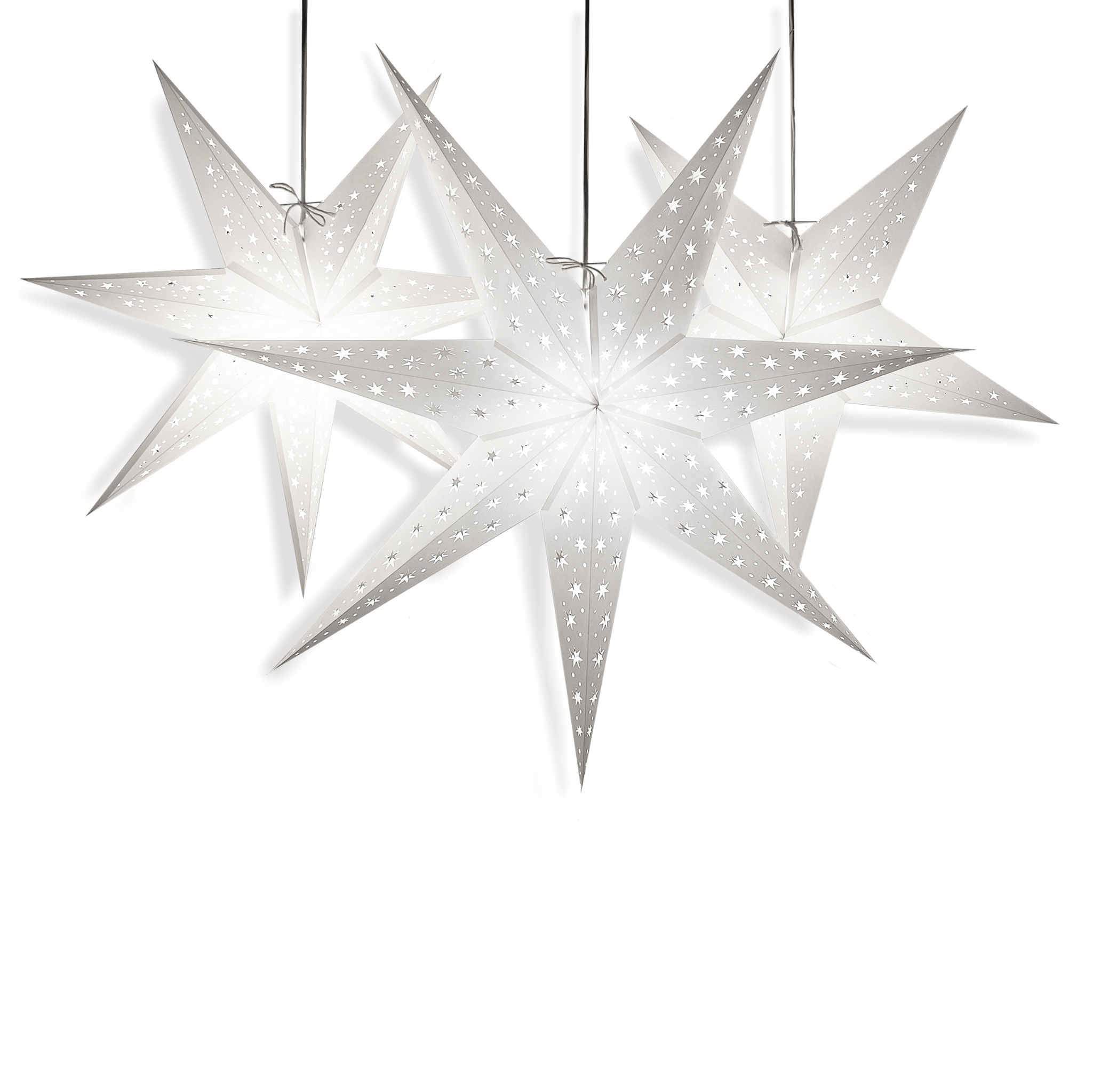
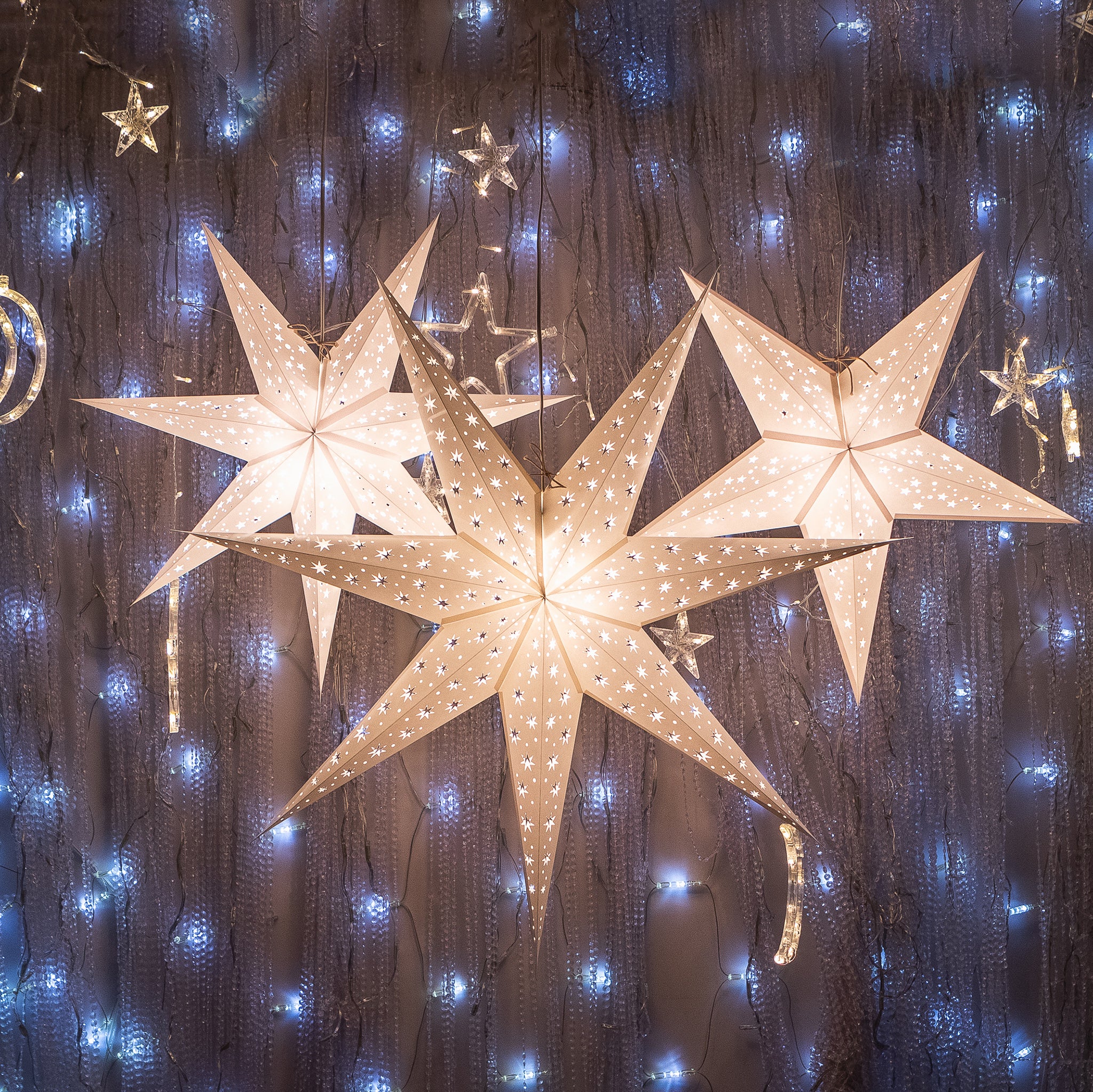

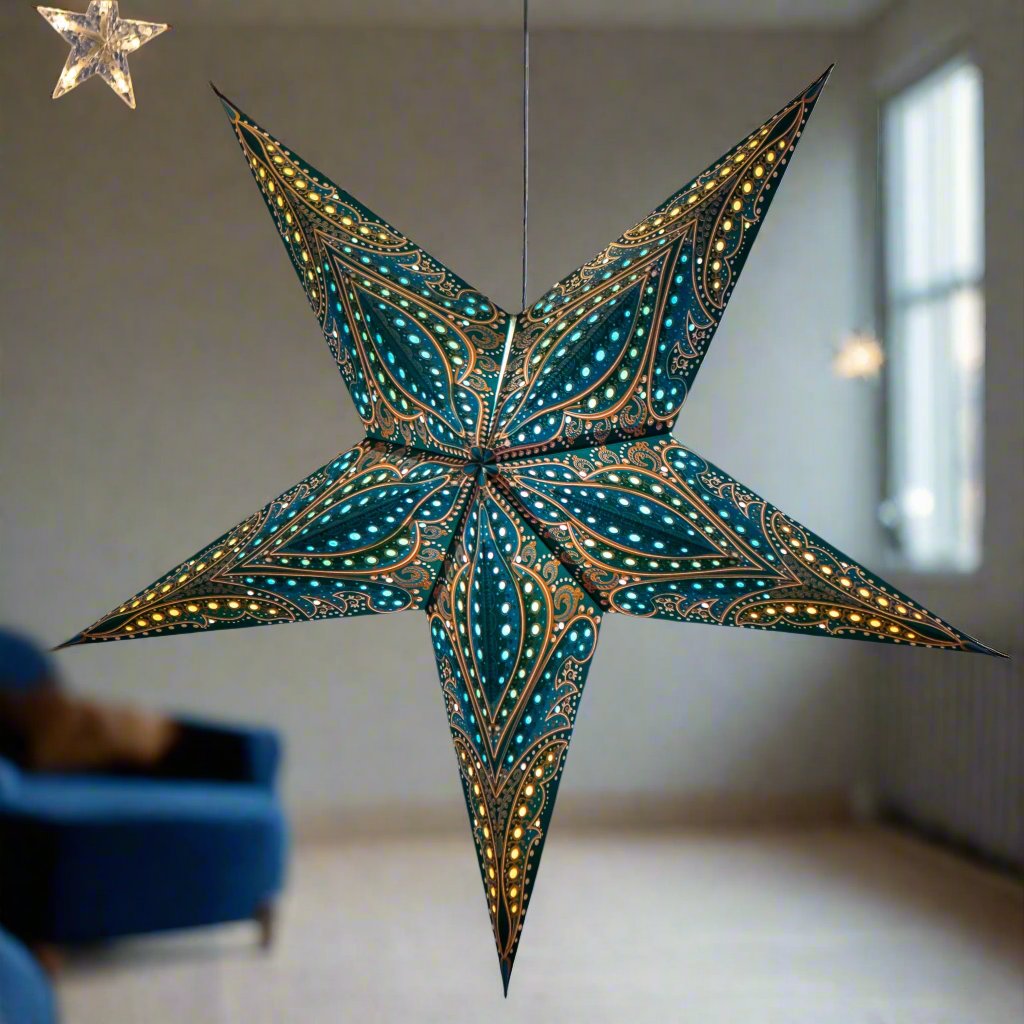

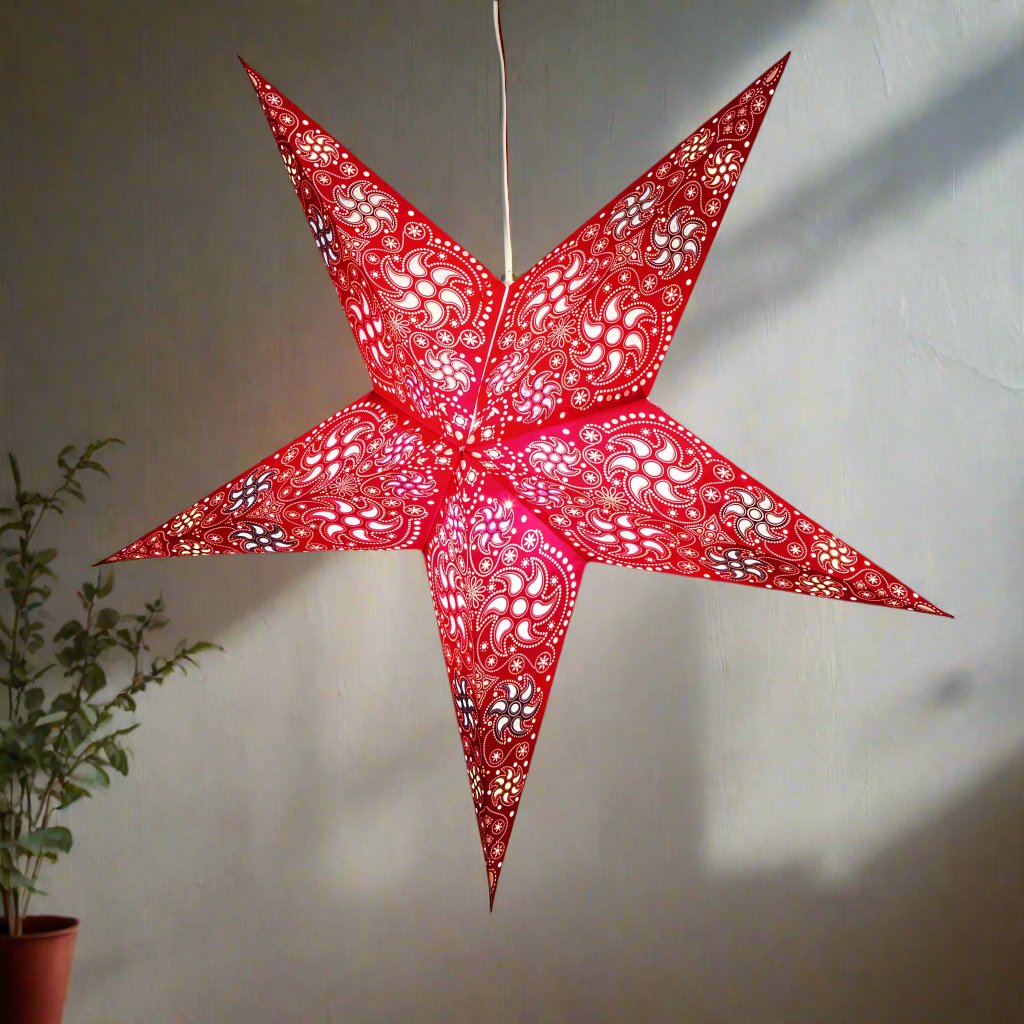

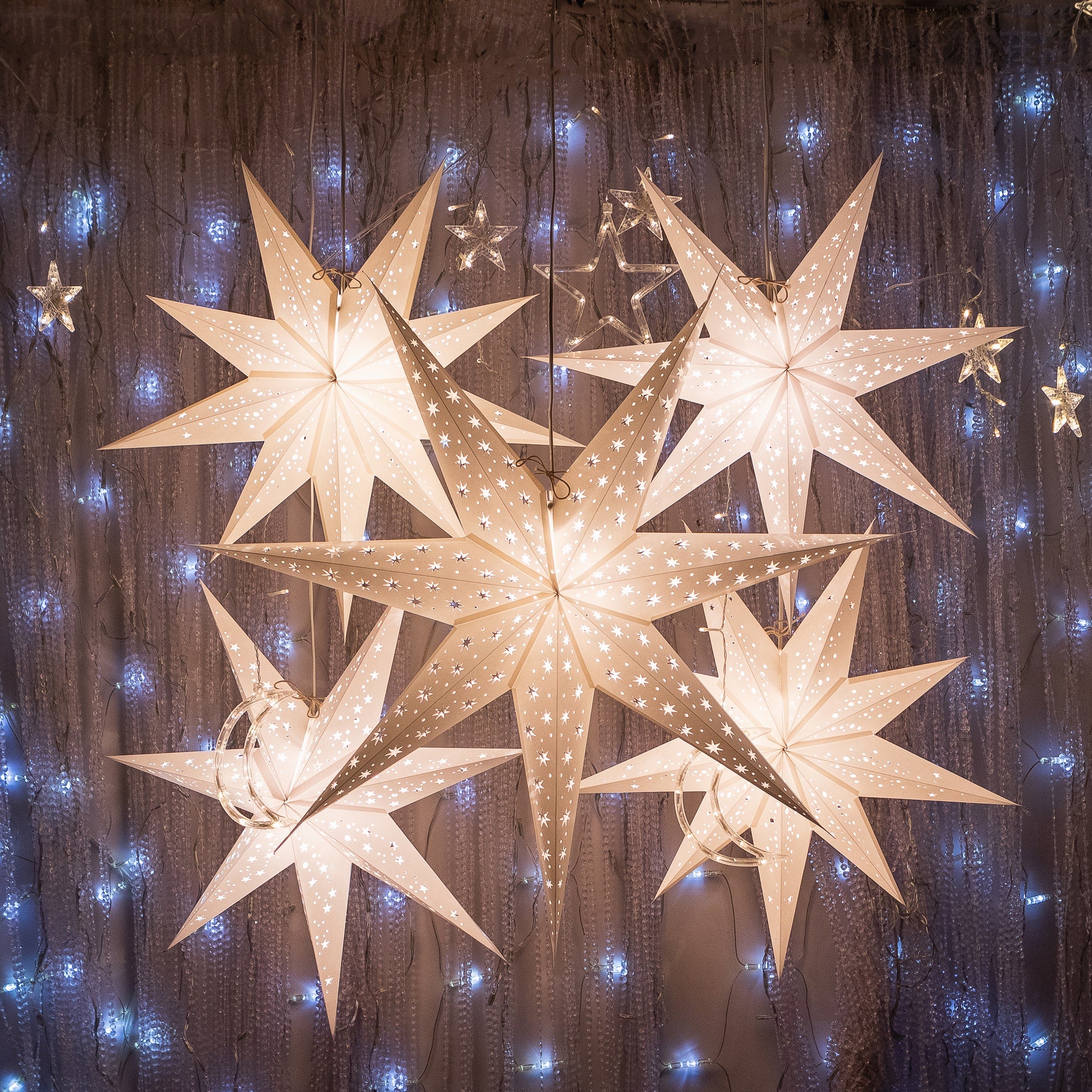



Leave a comment